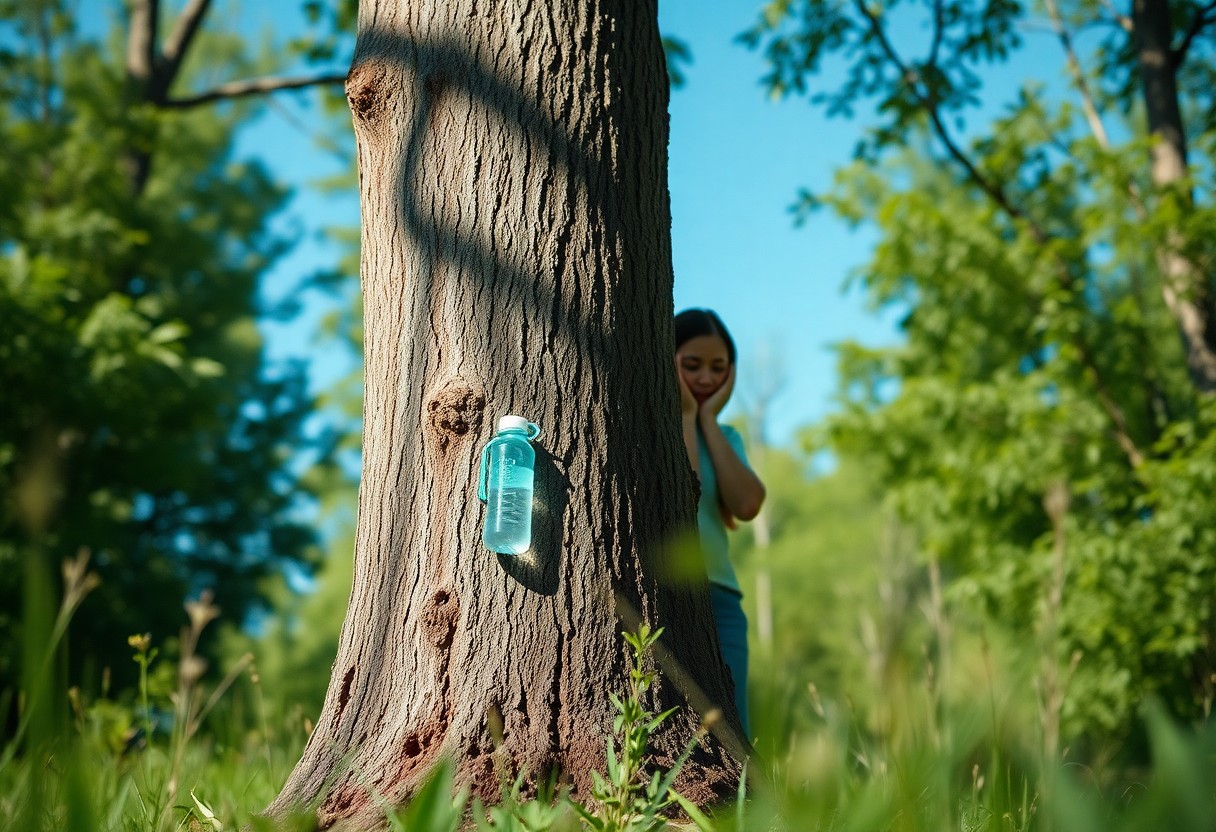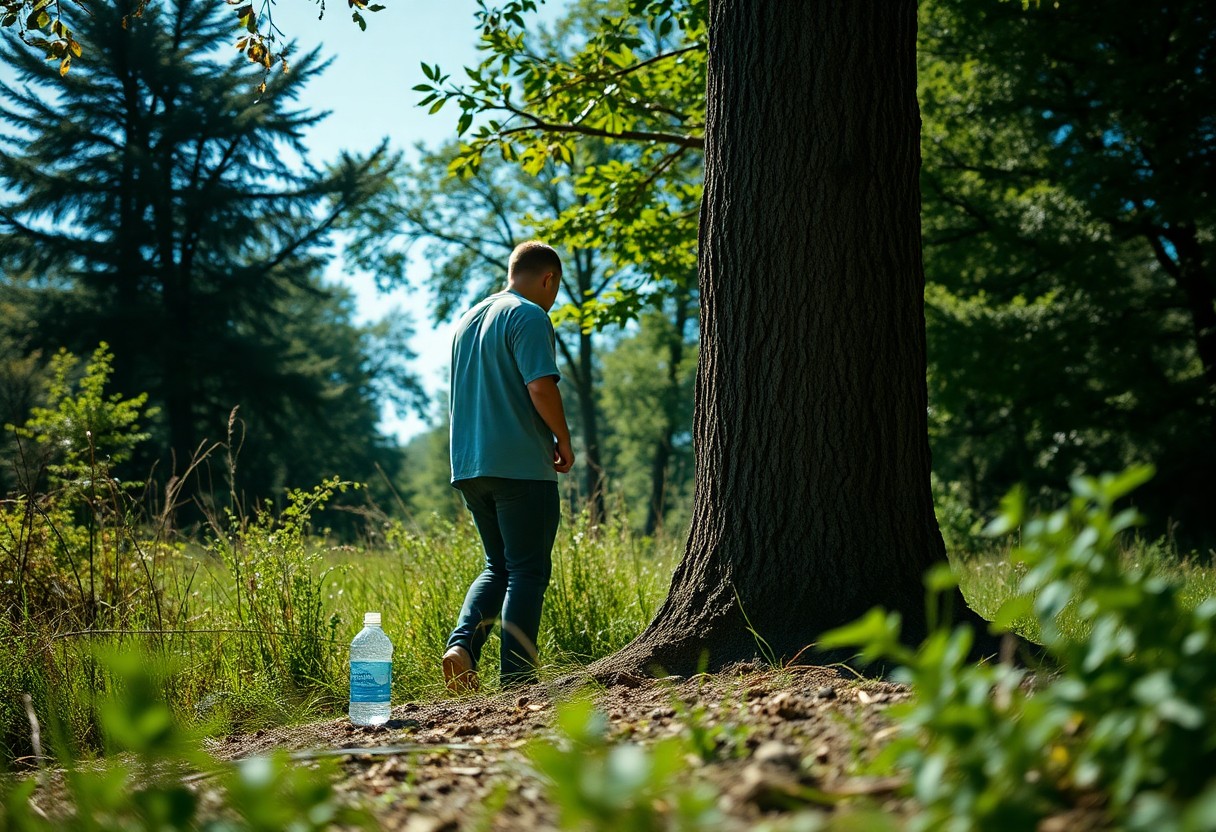Most outdoor enthusiasts find themselves in situations where traditional toilet facilities are unavailable, leading to the need for wild peeing and basic washing techniques. To ensure your comfort and hygiene, you must choose private, discreet spots, preferably away from trails and water sources. Use biodegradable wipes or eco-friendly soaps for washing when necessary, taking care to dispose of waste responsibly. Being equipped with the right tools and knowledge can transform your wilderness experience, allowing you to enjoy the great outdoors with confidence and cleanliness.
The Art of Choosing the Right Location for Nature’s Call
Selecting the right spot for your wild peeing sessions can distinguish a refreshing experience from a rather unpleasant one. Aim for areas that are away from trails and campsites, ensuring minimal disturbance to both nature and fellow adventurers. Natural barriers, such as bushes or trees, provide an excellent sense of cover while also reducing the likelihood of unwanted attention. Keep your activities discreet and considerate of local wildlife, aiming for a balance between accessibility and privacy.
Assessing Privacy and Safety
Your safety and privacy must be prioritised when choosing a location. Look for spots that are shielded from view, yet ensure that you remain within a safe distance from potential hazards, such as cliffs or busy roads. Areas that are not too isolated will allow for a quicker exit in case of unexpected encounters, whether human or animal. Always take a moment to scan your surroundings before settling on a spot.
Understanding Terrain and Environmental Considerations
The landscape can significantly impact your choice of location. Uneven or slippery terrain might pose a risk, while areas prone to flooding should be avoided, especially during wet seasons. Look for flat ground that drains well and is not prone to erosion. Steer clear of sensitive ecosystems, such as wetland areas, to minimise your environmental footprint. Dress appropriately for the conditions and choose locations that make your experience both safe and environmentally friendly.
Familiarising yourself with local flora and hydrology can enhance your wild peeing experience. Stay clear of areas with dense undergrowth that could host ticks or other pests, and recognise that certain plants, like poison ivy, can lead to discomfort. Consider the soil quality, as sandy or loose soil may prevent proper drainage, while rocky terrain can be uncomfortable and difficult for situating yourself. By understanding these factors, you ensure not only your comfort but also the preservation of the beautiful landscapes you encounter.
Gear that Makes Wild Peeing Easy
Equipping yourself with the right gear can significantly enhance your wild peeing experience. A portable urinal, such as the Shewee or similar products, provides a convenient way for women to pee standing up, ensuring comfort and privacy. For men, a simple funnel can transform any bottle into an effective solution. Pair these with biodegradable wipes or hand sanitiser and a compact toilet roll to ensure cleanliness after use. Selecting the right clothing, like quick-drying trousers, further enhances your comfort and expedites the entire process.
Essential Tools for Comfort and Cleanliness
Having crucial tools on hand makes wild peeing much more manageable. A strong, lightweight mat can create a hygienic area for squatting and sitting. Pair this with a sealable bag for waste disposal, ensuring you leave no trace. Women may also benefit from specially designed clothing that allows for easy access without exposing themselves too much. Practicality is key here, so a small backpack to carry these items is advisable.
Portable Solutions for Sustainability
Opting for portable solutions can greatly enhance your sustainability efforts while on the road. Consider using a reusable urination device that minimizes waste generated from single-use products. Combining this with a compact chemical toilet will allow you to dispose of waste responsibly. Additionally, choosing eco-friendly wipes made from biodegradable materials ensures you are protecting the environment even in the wild.
Many outdoor enthusiasts opt for compostable bags to manage solid waste, ensuring full compliance with Leave No Trace principles. These bags break down safely, reducing your ecological footprint. By selecting items designed for reusability and sustainability, you not only make your experience more convenient but also contribute positively to the environment. This thoughtful approach allows you to enjoy nature while preserving it for future generations.
Mastering the Technique
Developing the right technique for wild peeing can make a world of difference in your comfort and efficiency. You’ll need to find a suitable spot, ensuring privacy while maintaining an awareness of your surroundings. Positioning your body correctly helps prevent spills and makes the experience easier overall. Choose a stable stance, regardless of whether you squat or stand, to balance effectively while still achieving the desired results.
Tips for Proper Squatting or Standing
Proper stance is key for both squatting and standing during wild peeing. Here are a few tips:
- Find a level ground to keep your balance.
- Keep your feet shoulder-width apart for stability.
- Angle your body slightly forward to direct the flow.
- Knees should be slightly bent for comfort while squatting.
- Wear functional clothing that allows easy access.
Perceiving the need for balance and stability will help greatly in mastering wild peeing.
Strategies for Efficient Cleanup
After wild peeing, an efficient cleanup ensures you leave no trace behind. Always carry biodegradable wipes or toilet paper for quick clean-ups, disposing of them responsibly afterward. Consider using a small bottle of water to rinse yourself if it’s available, and pack out any waste in a sealed bag. The aim is to maintain hygiene while respecting the environment.
Utilising proper cleanup strategies is important for maintaining cleanliness in the wild. Keep a designated bag for all used wipes and tissues, and consider the environmental impact when deciding where to dispose of them. In remote areas, packing out your waste is the best course of action. Incorporate elements such as hand sanitiser and a small towel or cloth into your gear to mitigate any potential mess. All of these practical approaches will enable you to be mindful of hygiene, allowing you to enjoy nature without the worry of leaving a negative impact.
Navigating Social Norms and Challenges
Managing social norms while wild peeing requires a blend of awareness and tact. Different cultures and environments may have distinct expectations regarding public urination. Always assess your surroundings; if locals or fellow travellers appear uncomfortable, reconsider your approach. Take cues from the people around you, and strive to blend in rather than stand out. Avoid areas where there are children or families, as this can lead to unintended awkwardness or confrontation.
Respecting Fellow Travellers and Locals
Awareness of your fellow travellers and locals is crucial for maintaining a respectful travel environment. Always choose discreet spots that minimise your visibility to others, particularly in crowded areas. A polite nod or smile can go a long way in acknowledging their presence. If caught in an awkward situation, a friendly apology helps diffuse tension and maintains goodwill.
Handling Unforeseen Obstacles
The unexpected can happen at any moment while you’re on the road. Finding a suitable spot for wild peeing may be hindered by various factors such as dense vegetation, sudden onlookers, or even the terrain itself. Stay adaptable by scouting ahead, allowing for a quick change of plan if your initial choice turns out to be unsuitable. Always have a backup plan, such as knowing the locations of nearby restrooms or using portable gear that can facilitate your needs in challenging situations.
When faced with unforeseen obstacles, creativity and vigilance become your best allies. For instance, a sudden influx of hikers may disrupt your initial choice of privacy; in such cases, look for alternative locations like a more secluded area or a change in elevation. Also, consider utilising a tree or bush to block views, ensuring that you’re less noticeable. If all else fails, don’t hesitate to ask fellow travellers if they can help keep watch while you take care of business. The key is to remain calm and think on your feet, ensuring that your wild peeing experience remains comfortable, respectful, and efficient.

Hygiene Practices for the Wild
Maintaining hygiene while on the road ensures your comfort and health during your wild adventures. You’ll want to incorporate practical solutions that safeguard your wellbeing. Prioritising hygiene reduces the risks of infections and helps you feel revitalised during your travels. Keeping a routine is key, and knowing how to manage basic hygiene needs in the wild can enhance your experience immensely.
Wipes, Sanitizers, and Eco-Friendly Choices
Packing biodegradable wipes and alcohol-based sanitiser can be a game-changer when facilities are unavailable. These products effectively clean your hands and body, ensuring you stay fresh on the go. Opt for eco-friendly wipes that decompose over time, minimizing your environmental footprint. A small spray bottle of sanitiser should always be within reach, especially after visits to public areas or when cooking outdoors.
Disposal and Environmental Responsibility
Disposing of your hygiene products properly is important to protect nature. Always carry a sealed bag for used wipes and sanitary items, ensuring you leave no trace in the wild. While it might be tempting to bury or burn waste, this can create long-lasting environmental damage. Adhering to Leave No Trace principles will help preserve the beauty of the landscape for future adventurers.
Using designated waste disposal methods is vital if you want to minimise your impact on the environment. Many popular camping areas provide waste disposal facilities, and it’s wise to locate these before your trip. If you’re in a more isolated location without proper facilities, pack out everything you bring in. Conscientiously dealing with waste not only protects wildlife but also keeps the area clean for others. Consider carrying a lightweight portable toilet if you plan to camp for an extended period; this solution can make hygiene a breeze while ensuring you respect the landscape.
Summing up
Considering all points, when you’re on the road, knowing how to manage wild peeing and washing can make your outdoor experience much more enjoyable. Always choose discreet, private locations away from trails and water sources, and carry portable items like toilet paper and hand sanitiser for hygiene. Additionally, familiarise yourself with the Leave No Trace principles to minimise your environmental impact. With these tips, you can ensure that your travels remain both comfortable and responsible.
